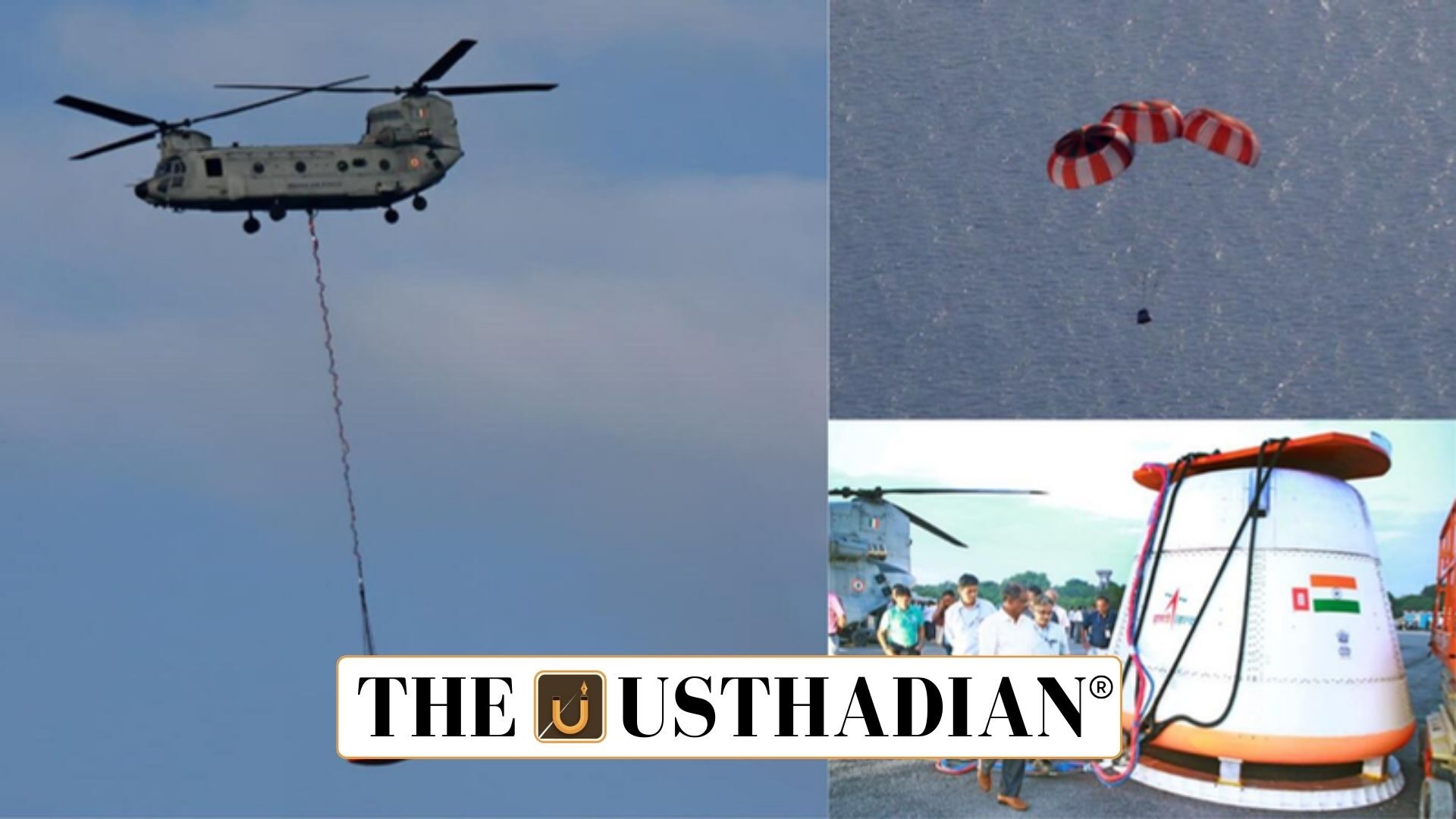Major Achievement in Space Programme
ISRO Air Drop Success Strengthens Gaganyaan Path: On August 24, 2025, the Indian Space Research Organisation (ISRO) conducted its first Integrated Air Drop Test (IADT-01) for the Gaganyaan Mission. This crucial trial verified the parachute deployment system, which is necessary to reduce the speed of the crew module and enable a safe landing.
Static GK fact: Gaganyaan is India’s first human spaceflight project, approved in 2018 with a budget of ₹10,000 crore.
Importance of the Parachute Test
The crew module must re-enter the Earth’s atmosphere at very high speeds. The parachute system demonstrated its ability to slow down the module, ensuring astronauts can land securely on land or sea. This mechanism is one of the most vital safety technologies for any human spaceflight.
Static GK Tip: The Gaganyaan crew module is designed to carry three astronauts into Low Earth Orbit.
Multi-Agency Partnership
The air drop test was conducted with the active support of the Indian Air Force, Defence Research and Development Organisation (DRDO), Indian Navy, and Indian Coast Guard. The participation of multiple agencies highlights India’s collaborative approach towards developing complex space systems.
Human Rated Rocket Ready
The Human Rated Launch Vehicle Mark-3 (HLVM3), a modified version of the LVM3 rocket, has completed all major ground checks. This vehicle has been strengthened to carry astronauts safely into space.
Static GK fact: LVM3, also called GSLV Mk-III, successfully carried the Chandrayaan-2 spacecraft in 2019.
Crew Safety Mechanisms
ISRO has developed and tested several critical systems to protect astronauts. The Environmental Control and Life Support System (ECLSS) has been realized to provide oxygen and maintain cabin pressure. The Crew Escape System (CES), built with five powerful motors, has undergone successful static tests to ensure astronauts can escape quickly if a launch emergency occurs.
Infrastructure and Training Support
Alongside rockets and modules, ground infrastructure has been established. Facilities such as the Orbital Module Preparation Facility, the Control Centre for Gaganyaan, and the Crew Training Centre have been set up. Modifications to the Second Launch Pad at Sriharikota have also been completed.
Static GK fact: Indian astronauts for the Gaganyaan programme are receiving training with support from Russia’s Gagarin Cosmonaut Training Centre.
Upcoming Trials and Uncrewed Missions
ISRO has already carried out the Test Vehicle Demonstration-1 (TV-D1), which validated the Crew Escape System. Preparations are now underway for TV-D2 and the first uncrewed mission (G1). The uncrewed mission will carry structural models of the crew module and service module to verify system performance before astronauts fly.
India’s Long-Term Human Space Goals
The Gaganyaan Mission is seen as the first step in a larger human spaceflight journey. ISRO has set targets to establish the Bharatiya Antariksha Station (BAS) by 2035, enabling long-duration human stays in orbit. The Government has also announced plans to attempt a crewed Moon landing by 2040.
Static GK Tip: The Soviet Union launched the world’s first space station, Salyut 1, in 1971.
Static Usthadian Current Affairs Table
ISRO Air Drop Success Strengthens Gaganyaan Path:
| Topic | Detail |
| Date of IADT-01 test | August 24, 2025 |
| Purpose of test | Validating parachute-based deceleration for crew safety |
| Agencies involved | ISRO, IAF, DRDO, Indian Navy, Coast Guard |
| Human-rated rocket | HLVM3 (modified LVM3) |
| Crew capacity | 3 astronauts in Low Earth Orbit |
| Training collaboration | Russia’s Gagarin Cosmonaut Training Centre |
| Major test flight validated | TV-D1 (Crew Escape System) |
| Next test | TV-D2 and G1 uncrewed mission |
| Long-term goal | Bharatiya Antariksha Station by 2035 |
| Moon mission target | Human landing by 2040 |








